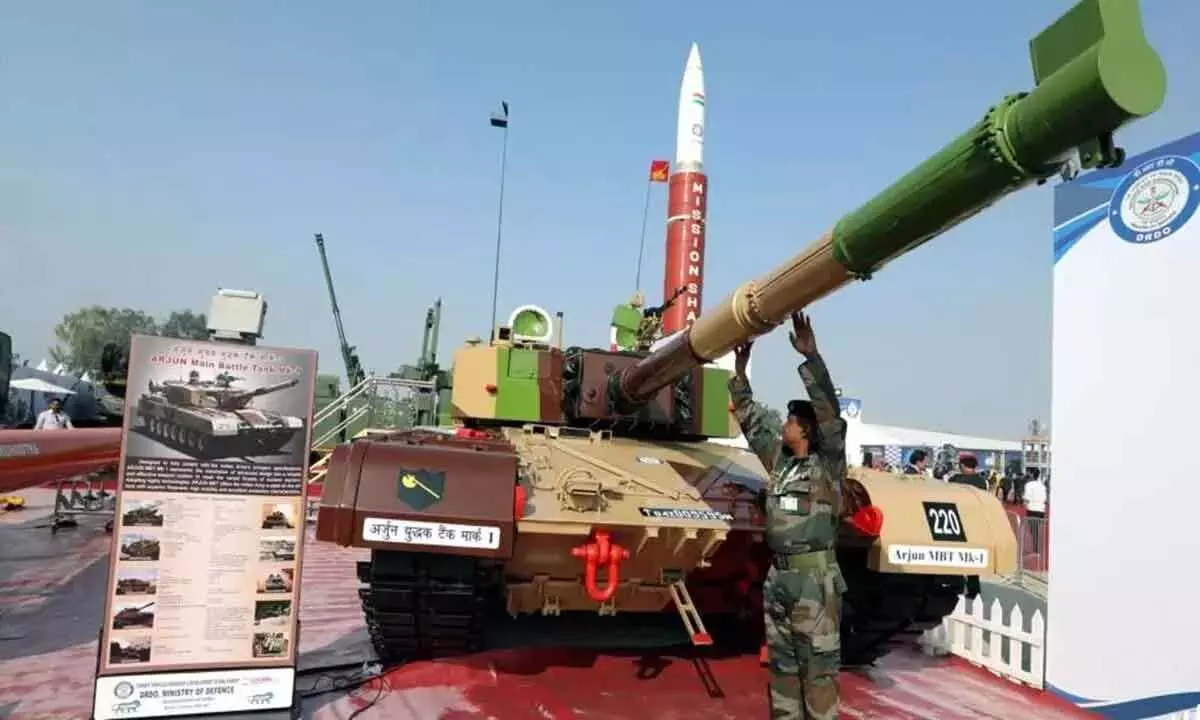Indigenous manufacture is the way out for India's defence preparedness
Relying heavily on imports can expose vulnerability
image for illustrative purpose

Indigenisation and self-reliance in defence manufacturing is a strategic imperative for India. As a regional Indo-Pacific power, its dependence on imports is a critical vulnerability.
This has been exposed more than once; the first time was when USSR collapsed and so did its defence industry ,which left the Soviet-equipped Indian armed forces facing a spares crisis leading to serious security concerns.
India's defense exports increased nearly nine-fold in the past five years to Rs. 130 billion. Meanwhile, foreign arms still account for close to 40% of the country's annual defence procurement, making it one of the world's top arms importers, with nearly half of those still coming from Russia. In 2021, the Union Government listed 209 items, which would be produced indigenously with the timeline reflected against each in two 'Positive Indigenisation Lists'.
Another 'Positive Indigenisation List' included 2,851 items, including assemblies, components and sub-components, imports of which are also embargoed. In addition, various other initiatives have been taken to encourage indigenous production. These include the 'Innovations for Defence Excellence'(iDEX) scheme to encourage MSMEs, implementation of 'Public Procurement (Preference to Make in India), Order 2017', the launch of the SRIJAN portal to facilitate indigenisation and establishment of two defence industrial corridors, one each in Uttar Pradesh and Tamil Nadu.
The Defence Acquisition Procedure, as the very term suggests, is a procedure that provides guidelines for defence procurement and is not a set of rules carved in stone. Hence, in certain cases, a degree of flexibility should be available to ensure timely induction of an essential capability. The reason this does not happen is because of a glaring anomaly in the country's higher defence organisation wherein the armed forces headquarters, who are the final users of the equipment and have the knowledge, expertise and experience are not an integral part of the Ministry of Defence; they are in fact attached offices, which limits their participation in the decision making process to being the 'repository of technical information and advise the department on select technical aspects. This is hardly conducive to effective or efficient decision making on matters of national security.
The Ministry of Defence is manned by a large and complex organisation of generalist bureaucrats drawn from all government departments for limited tenures, more often than not with no background knowledge of matters pertaining either to national security, the armed forces or technological complexities of defence equipment. Thrust into appointments where they have to take decisions on issues they know very little about, they often raise queries and seek clarifications on matters which expose their ignorance and lack of professionalism. Even a single frivolous query can lead to delays of a few months at times and if they keep getting raised by different departments, and at different levels, this to-and-fro can go on for years, as indeed it does with consequential effects on defence modernisation, combat preparedness, committed liabilities and budget allocations. The irony of the Ministry is that armed forces have perhaps the least representation in any of its departments.
A weighted index with realistic expectations would deliver better and speedier results. Cost is an important factor in defence procurements the world over but the decision is based on more sophisticated methods of price discovery to select the best their forces require, unlike India, which goes for the cheapest. Unfortunately, despite this being common knowledge, little has been done to address it in successive DPPs, including the DAP 2020. Perhaps the major criticism of the complex Defence Procurement Procedure is that hardly any big-ticket item has been procured via the DPP route.
In the past two decades all helicopters, aircraft, ships, submarines and artillery guns procured from abroad have come through the G2G/FMS mechanism. Only MMRCA programme followed the DPP till the declaration of the L1 bidder. However, this could not be taken to its logical conclusion for a host of reasons and the government finally had to resort to a G2G arrangement with France for these aircraft under very different conditions and prices than had been determined via the laid down procedure.
With Russia not likely to be a dominant player in arms imports, it would be prudent to ally with the US, Israel, France and other big players to meet the country's critical requirements and to get best technology available till such time India catches up.

